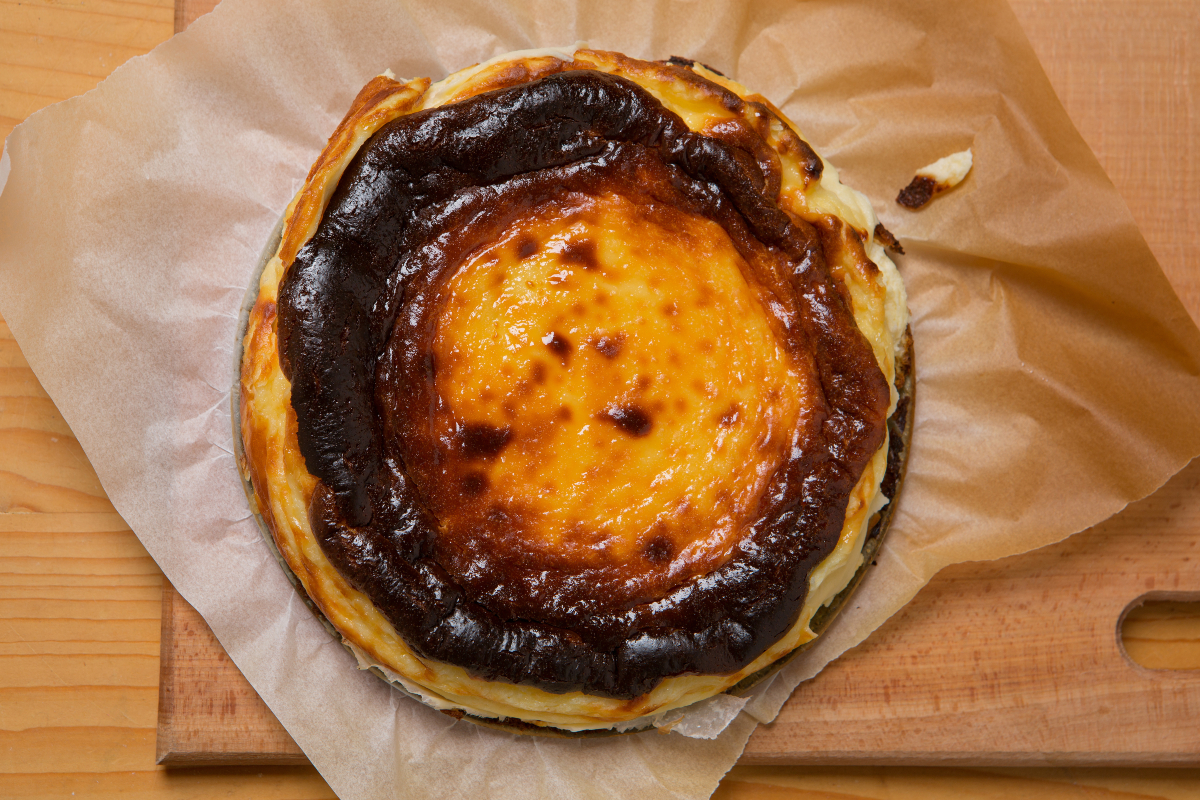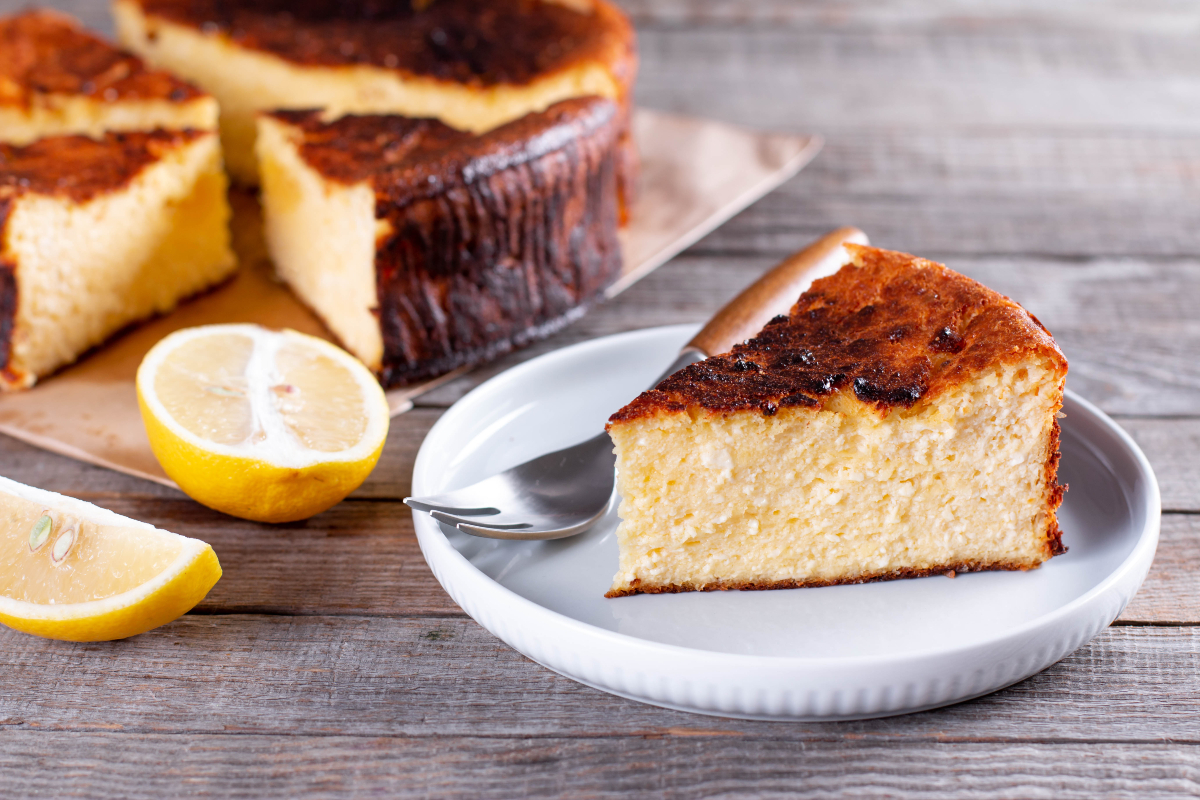Basque cheesecake was first invented by Spanish chef Santiago Rivera. He called his creation “Tarta de queso,” which translates to “cheesecake.” However, since most of us think of a certain New York-style dessert when we hear “cheesecake,” this crustless recipe was given the name Basque cheesecake in honor of the resort town where Chef Rivera created it.
“Burnt cheesecake isn’t something our grandmothers made for us,” Basque chef Asier Garcia told The Kitchn. “It came out of a restaurant called La Viña in San Sebastian in the 1990s, with almost every chef, home baker, and magazine riffing on the recipe created by chef Santiago Rivera.”

The Basque cheesecake generally calls for just a few simple ingredients you probably already have on hand: Cream cheese, heavy cream, eggs, sugar, salt and flour. Some recipes may include butter or vanilla extract or recommend having a cooking spray on hand as well.
It is cooked at a higher temperature than traditional cheesecake, so it differs in both taste and texture. It has no crust and the interior is gooey and fluffier than with a traditional dense cheesecake — almost like a mousse or a pudding. It is also subtly sweeter, allowing the flavor of the cream cheese to really shine. Because of its lack of crust and the fact that a cracked, discolored exterior is just fine, making a Basque cheesecake requires a bit less fuss than a regular cheesecake.
Although Basque cheesecake doesn’t have a traditional bready crust, it does develop caramelization on top. This rich brown crust is what has led it to also be called “burnt cheesecake” — but rest assured it is not actually burned. The cheesecake is baked in the oven at 400 degrees Fahrenheit in a springform pan lined with parchment paper. (Most New York-style cheesecakes bake in an oven at around 325 degrees Fahrenheit.)

Basque cheesecake is baked until it is evenly browned on top. It should jiggle in the center when you gently shake it. Although this dessert has more of a mouse-like interior, it still needs to set, just like a traditional cheesecake (which should also jiggle in the center immediately after it is finished baking).
There are many variations of Basque cheesecake. Try a traditional recipe like this one from The Kitchn, or experiment with flavors like Blueberry Basque cheesecake from Half-Baked Harvest.
This story originally appeared on Simplemost. Check out Simplemost for additional stories.


